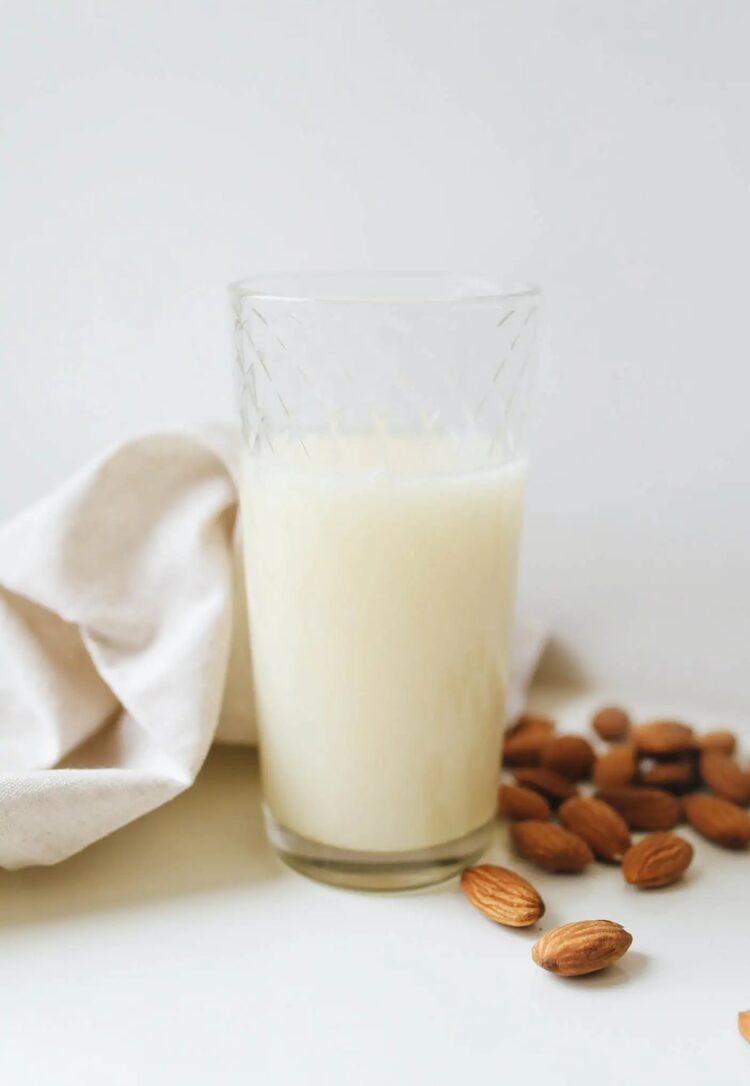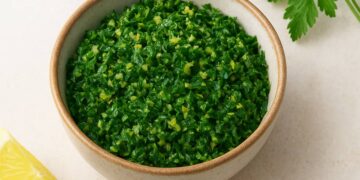Imagine walking into the kitchen early in the morning and finding nothing but almond milk, and you’re also experiencing frequent IBS symptoms. This is a problem for you. You’re probably wondering Is almond milk low FODMAP, or if you should simply consume it without worrying about it. If symptoms like intestinal irritation, bloating, pain, or diarrhea arise, that’s a later issue. Well, for those with IBS, you inevitably need to understand various foods so that you only consume low-FODMAP foods during the initial elimination period.
In this article, I want to provide an explanation that will certainly be useful for those of you who have digestive issues, especially almond milk. For those of you who have enjoyed the deliciousness of almond milk, if you’re experiencing problems with irritable bowel syndrome, you’ll undoubtedly want to know about almond milk, whether it’s a food you can consume or whether you should avoid it temporarily while your health improves.
Understanding the F-word: FODMAP
Although I’ve explained it frequently in previous articles, I’d like to begin this article with a brief explanation of FODMAPs. Well, these letters indicate fermented carbohydrates or carbohydrates that are difficult to digest. These are fermentable carbs—things like oligosaccharides (fructans and GOS), lactose, fructose, and certain sugar alcohols (polyols). That’s what the Wikipedia page says.
For people with sensitive stomachs or IBS, these are carbohydrates that can ferment in the intestines, causing gas, water retention, and unwelcome cramps or bloating. Pretty scary, right?
So, to avoid these problems, many people follow a low-FODMAP diet. This diet involves eliminating foods high in FODMAPs. According to VeryWellHealth, for the first week, these foods should be avoided, then slowly reintroduced, while monitoring how your body reacts.
Enter Almond Milk: Friend or Foe?
Today, we’re discussing almond milk, specifically whether it’s a suitable option for IBS sufferers.
The simple, reassuring answer is “yes, almond milk is good for digestion because it’s low in FODMAPs.” But it’s important to consider the context. Even though it’s low in short-chain carbohydrates, don’t consume it as you please, because in large portions, low-FODMAP foods can also turn into high-FODMAP foods.
Since it’s generally safe, let’s look at why almond milk is safe.
Why almond milk is often safe
In fact, whole almonds are high in FODMAPs when eaten in large quantities. This high FODMAP content is due to the galacto-oligosaccharides (GOS). This is also why IBS sufferers limit whole almonds. A tolerable portion is 10 almonds per day.
But commercial almond milk is a different story. Most brands available on the market only contain 2-3% almonds. Well, a 1-cup serving only provides a small amount of FODMAPs, equivalent to a handful of whole almonds (5g), which is still considered low-FODMAP. [Spoonfulapp]
Data from Monash University states that experts from Monash University and FODMAP experts confirm that almond milk is low-FODMAP, but in confirmed portions. A low portion is about 1 cup or about 240 ml. [Monash]
A Cautionary Twist: Homemade Almond Milk
Homemade almond milk usually uses a higher almond content than water. Perhaps 10% to 20% almonds. Using that percentage, a 250ml serving could contain 25 to 50 grams of almonds. This is far above the permitted (safe) limit, and consuming homemade almond milk like this could cause stomach upset and even diarrhea.
So, speaking of almond milk, homemade almond milk is more dangerous (if it contains more almonds) than commercial almond milk, which contains fewer almonds. Commercial milk options are safer for those with IBS.
Watch for the Villains in the Ingredient List
If you add extra ingredients high in FODMAPs, even low-FODMAP foods can become high-FODMAP foods. Therefore, carefully review the ingredient list to ensure there are no high-FODMAP ingredients.
What ingredients are often considered high-FODMAP? Some of them are: inulin, chicory root, honey, high-fructose corn syrup, and agave syrup. Natural flavorings are usually low in these, but if they contain onion or garlic, it’s a different story. Sweetened almond milk containing vanilla and chocolate is usually within safe limits for IBS.
Check out other low FODMAP foods:
- Is Quinoa Low FODMAP? A Dietitian-Level Guide You Can Trust
- Are Tomatoes Really Low FODMAP? Here’s What You Must Know Before Your Next Meal
Other low-FODMAP milks
If you’re curious about other milks that are considered low-FODMAP, see the following list.
- Macadamia milk – low FODMAP at 1 cup
- Rice milk – low up to ¾ cup
- Quinoa milk – low up to 1 cup
- Cashew milk – low if fat content ≤ 5 g; watch otherwise
- Coconut milk (carton/UHT) – low up to ¾ cup; canned milk is more limited
- Soy milk – if made from soy protein (not whole beans), it’s low
Looking at the list of low-FODMAP milks above, we know that portion size is crucial. As the portion size increases or the amount increases, the FODMAP levels also change.
A little bit about my friend, Sarah’s experience!

Sarah recently tried low-FODMAP milk. One morning, feeling hungry, she craved a latte, and decided to make it herself by adding homemade almond milk (milk her neighbor, Dina, had given her). The milk, it turns out, was made with plenty of whole almonds (to enrich the nutrients). As the afternoon approached, Sarah experienced stomach protests, cramping, and discomfort.
The next week, Sarah made her favorite latte again using almond milk. This time, she used a commercial, unsweetened almond milk she bought at a local store. She read the label and discovered it was inulin-free, agave-free, and calcium-fortified. She added it to her latte, a cup of which she enjoyed. It was delicious, and she didn’t experience any bloating, diarrhea, or other IBS symptoms she had experienced the previous week. Sarah discovered that commercial, unsweetened almond milk is low in FODMAPs. Since that, she doesn’t ask anymore about “Is almond milk low FODMAP?”
Tips for Enjoying Almond Milk on low-FODMAP diet
| Tip | Why It Matters |
|---|---|
| Stick to commercial almond milk, not homemade | Lower almond concentration keeps FODMAPs in check |
| Watch serving size (≤ 1 cup/240 ml) | That’s the tested safe threshold |
| Read ingredient labels | Avoid added FODMAP ingredients like inulin, agave, and high-fructose corn syrup |
| Prefer fortified versions | Ensures you get nutrients like calcium or vitamin D that almond milk tends to lack. |
| Rotate options if needed | Let’s your gut rest and give variety—think macadamia, rice, quinoa milks. |
Conclusion
So, is almond milk low-FODMAP? Of course, as long as it’s commercially available. Homemade products are usually high in FODMAPs because most people use almonds that exceed the safe limit. But choose commercial products that don’t hide the label.
Next time you want to add almond milk to your coffee or smoothie, consider my friend Sarah’s experience.













